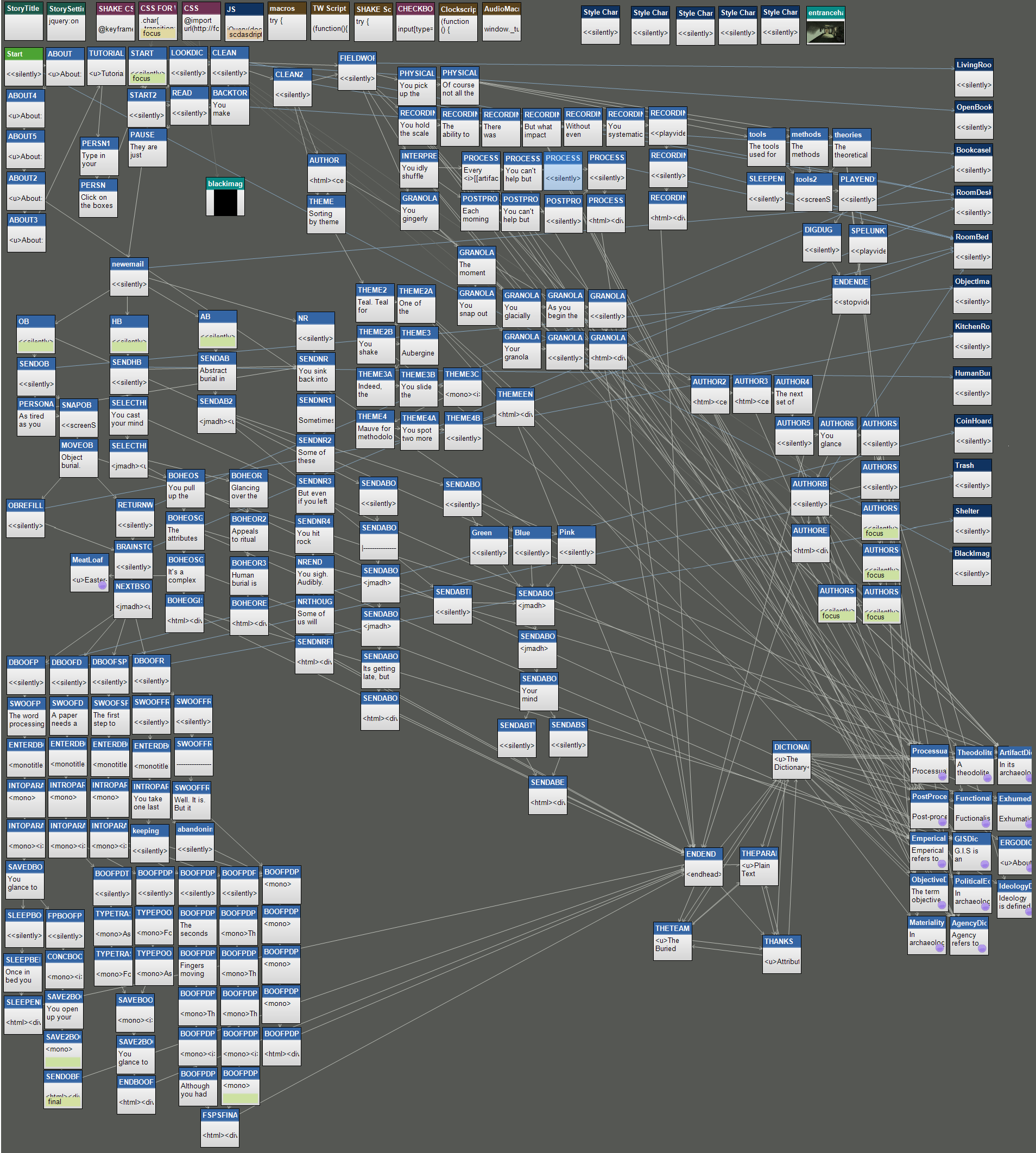WHAT IS TWINE:
AT A GLANCE:
- [x] Free game / narrative creating software
- [x] Based on hyperlinking and hypertext
- [x] Accessible to non-programers
- [x] Extendable using HTML, CSS and javascript
AT LENGTH:
Twine is a free, open-source platform that can be used for writing non-linear and interactive stories. At the core of Twine is a graphical user interface for creating structured hypertext - the process of linking between parts of the work using a network of links. Simply put, this means Twine can be used to create stories and games that follow different paths and offer the player choices for how the story unfolds.When you create narratives in Twine you create chunks of text - called passages in the editor - that you link to other passages, allowing the story to potentially progress in many different directions. Such a structure allows us to break outside of the static, linear, top to bottom ways which most text editors we are familiar with using work:

On the left is a word document. Written to be read from top to bottom. On the right is the Twine interface. Each of the boxes is a node, linked by directional lines. A single box can lead to many other boxes and the story can progress in may different directions, or with a little bit of coding these linkages can become conditional - requiring that a player has visited a certain place, or taken a particular object, or has a certain amount of health remaining before text will be displayed in a given passage.
Twine was created by Chris Klimas to make interactive fiction and text driven games easier to create. Many of the earlier engines and interfaces for creating games required a great deal of specialist programming knowledge, thereby creating a huge barrier to entry which only coders could navigate. Other platforms, such as Inform7, have tried to lower the barriers to entry through creating natural language programming and easy to access libraries for construction - however, the way in which these engines operates arguably still require a level of design and development skills before they can be used. By contrast, Twine can be operated entirely from click and drag menus, thereby requiring no specialist programming, design or development skills to use (though these can be employed to significantly extend the functionality, appearance or operation of a given narrative / game). To this end, Twine is a brilliant tool for beginners to sink their teeth into, for designers and developers to prototype narrative flow and structure for bigger projects and to create fully fledged games / narratives alike.
Twine comes in two major release forms: Twine 1.4 and Twine 2.0. Both are available for OSX and Windows, with an additional web-based application for Twine 2.0. The core functionality is similar between the two releases - both 1.4 and 2.0 use a graphical representation of "passages" - sections of text which you use a basic markup language to create hyperlinks between. Each version of Twine has it's own flavour and level of accessibility which may make it more or less suitable for your particular task. For a comparison of the two releases see section X.

Demonstrating the links and loops that a twine story allows through hypertext (Image from Copplestone 2014, BURIED).
The Twine editor creates, saves and opens .twee files that are graphically rendered on teh screen as passages with linkages. Each story is created under a particular "runtime" or "story formats", which changes how the story operates and looks when it is published. The most common story formats for each release of Twine are outlined in detail in Section X. From the editor you can then compile your story / game, which produces a HTML file that can be uploaded to an online location, accessed and played. Because Twine uses web technology it is possible to leverage CSS, HTML and javascript to alter the appearance, add functionality or change how the player can interact with the game. For further discussion of this refer to the advanced sections of Sections X and X and the advanced examples in the "Step by Step" sections.